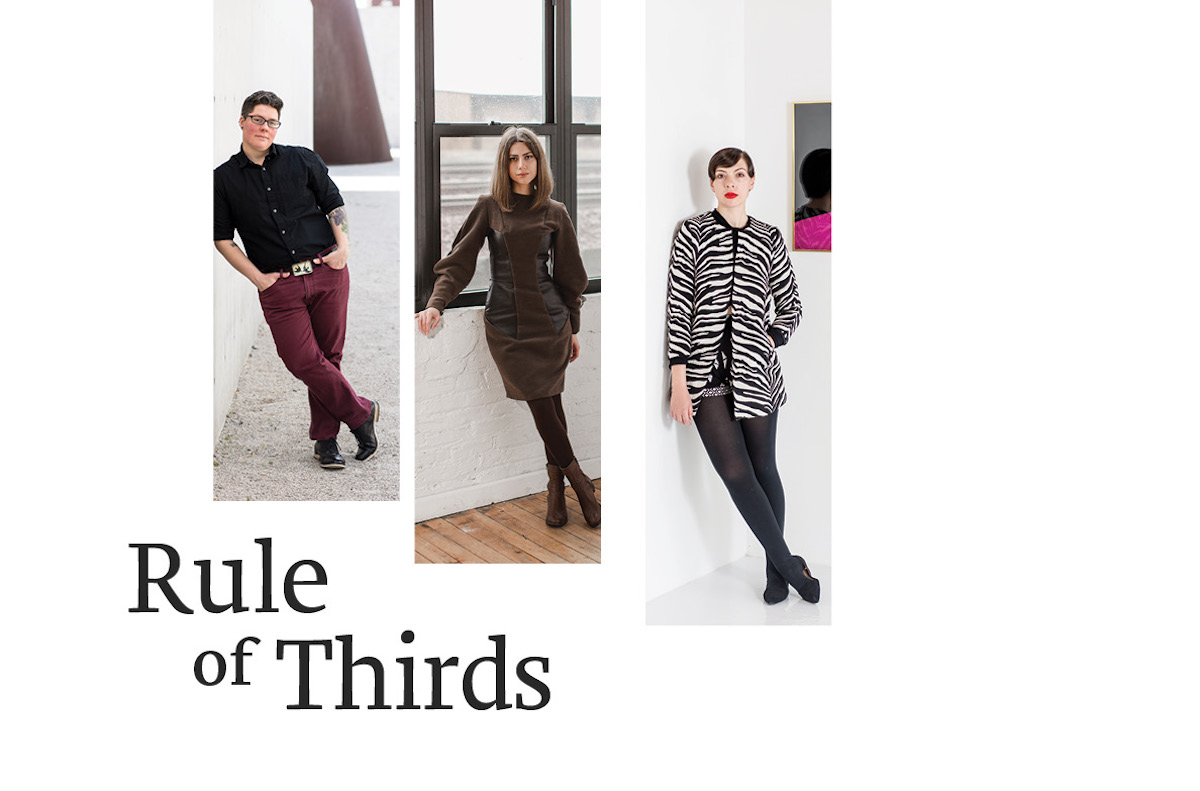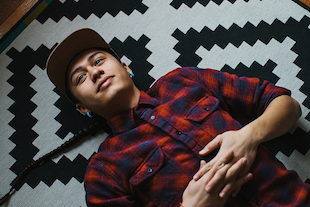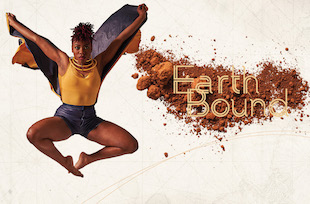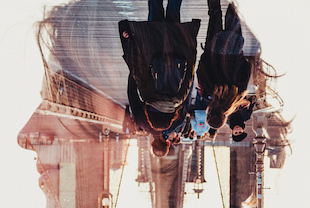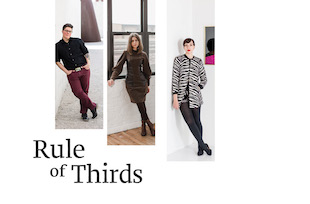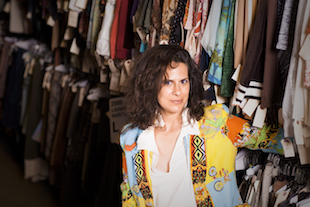Rule of Thirds
DEMO Portfolio
Three photography alums explore bodies and identity with their cameras.
How do you define identity? Is it how you look? How you act? Where you come from? Three contemporary photographers—Jess T. Dugan MFA ’14, Anahid Ghorbani MFA ’17, and Natalie Krick MFA ’12—are reinventing and exploring the subjects of bodies and identity. Each photographer deconstructs misconceptions of gender, sexuality, and identity in contemporary culture by creating work that breaks the boundary between the art and the audience. DEMO talks with all three about the shape of their careers since Columbia College Chicago, taking photography to the next level, and their unique forms of portraiture.
DEMO: How does identity influence your work?
DUGAN: This is really the core of my work. My work explores issues around identity, specifically sexuality and gender identity. I think a lot about the need we have to be part of a larger community—to be seen by and connected with another person. My work comes from my identity as a queer person in the world, as a gender nonconforming person, and centers around those identities.
KRICK: My personal identity influences my work in so many ways. I was thinking, “What ways does it not influence my work?” I use myself—my own body—very often. [The images] are divorced from reality in many ways: [They] are very performative and deceptive. Although they’re not autobiographical by any means, I think all the images are seeped in my own personal inflections. I’m always trying to insert elements of my own experiences and sense of humor.
GHORBANI: That’s the same for me. In The Color is Black, which is engaged with the oppression of women and denial of identity, I explore my emotional responses and experiences that embody these themes, particularly in Iran. I believe women are oppressed in contemporary culture and their identities, freedom, and expressions are being controlled. I use poetic visual language to address these issues. My work has a fear of revealing the identity, so the subject is invisible.
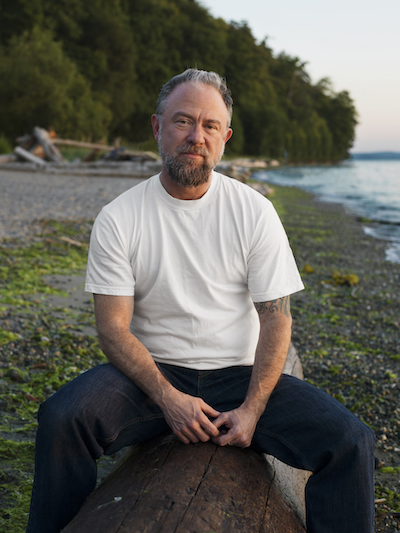 Jess Dugan, “Aidan, 52, Burien, WA,” To Survive On This Shore, 2016: “One thing I’ve started doing that I hope will continue is partnering with nonprofit organizations to use To Survive On This Shore as a springboard for discussion,” says Dugan. “I hope the work takes a life of its own in terms of advocacy and education.”
Jess Dugan, “Aidan, 52, Burien, WA,” To Survive On This Shore, 2016: “One thing I’ve started doing that I hope will continue is partnering with nonprofit organizations to use To Survive On This Shore as a springboard for discussion,” says Dugan. “I hope the work takes a life of its own in terms of advocacy and education.”
DEMO: How does gender come into play within your work?
DUGAN: Every Breath We Drew is very subjective in nature. It’s very much about me, my identity, [and] the connection I make with people I’m photographing. I’m really interested in what I’ve been calling “gentle masculinity” or “more complicated masculinity.” I tend to be drawn to people who are very sure of themselves, but also vulnerable—either male-bodied individuals who are more vulnerable and emotional, or female-bodied individuals who are more on the masculine-presenting side. It gets slippery to try to label the people in the work because it’s so much about fluidity and breaking down barriers of traditional gender expectations. My work is always about gender. Sometimes it’s subtle, subjective, and nuanced; other times it’s direct and has an educational, social justice, and activist mission.
KRICK: My work focuses on the performance of femininity, specifically the clichés found in mass and popular culture in the United States. When I was making Natural Deceptions, the project I worked on with my mom and sister, I was thinking a lot about how I learned to perform as female, how I learned this through my mother, but also mainstream culture and images.
GHORBANI: At Columbia, I had an installation called No Men Allowed, so obviously gender was specific in that work. Men were not allowed to go inside the room and see the work. They were just able to read the text on the outside walls. Gender has been really important in my work, but I still want to break stereotypes because the women of Iran are all powerful and successful in different ways, which is different than what you see in media.
Jess Dugan MFA ’14
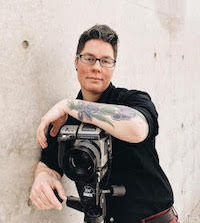
Jess Dugan began taking photography classes in high school. “I immediately started making portraits and work about gender,” says Dugan. “When I look at the very first pictures I made and the pictures I’m making today, they’re conceptually related.”
Dugan’s work combines community, craft, and activism, showcasing the intersectionality of the LGBTQ communities. Her ongoing series, Every Breath We Drew, presents intimate portraits of people as their most comfortable selves, exploring the complicated intersections of gender, sexuality, and identity. Dugan’s most recent collection, To Survive on this Shore, is a collaboration with her partner. Together, they traveled the United States to interview and photograph transgender and gender nonconforming people over the age of 50. Both collections have been published as books and exhibited nationally, including at the Smithsonian National Portrait Gallery, the Aperture Foundation, the San Diego Museum of Art, and the Museum of Contemporary Photography.
See more of her work at jessdugan.com
DEMO: You all create hybrid work. Anahid, you use video installation and build structures. Natalie, you collage photos using physical paper and Photoshop, and Jess, for To Survive on This Shore, you paired text narratives with portraiture. What draws you all to other forms?
GHORBANI: Personally, I have never been satisfied with having just a photograph on the wall. I require engagement of the viewer with my work and I don’t want to give an option to just pass by. Through using the [physical] space, I can make viewers more involved with my work. I engage the viewer more in my work: isolating them from the environment [and] requiring their full attention.
DUGAN: I’ve always had an interest in interviews and oral histories, but I’ve never figured out how to make the text and photographs have equal weight. When I started To Survive on This Shore (an interview series with transgender and gender nonconforming people over 50) with my partner who is a social worker, we decided to do photographs and interviews with each person. We really wanted to capture their histories, especially since some of the people transitioned as early as 1970. I was aware there are certain things that you can’t capture in a photograph, and I wanted more of each person’s story than I could capture visually.
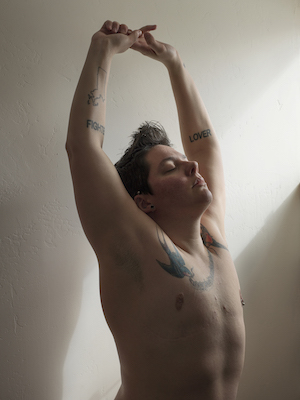 Jess Dugan, “Self-portrait (reaching),” Every Breath We Drew, 2014—“It was essential that I prove to myself I could be an artist outside of the school environment,” says Dugan on her decision to take time off before pursuing an MFA in Photography. “I started having exhibitions, showing my work around Boston primarily, [and] giving talks.”
Jess Dugan, “Self-portrait (reaching),” Every Breath We Drew, 2014—“It was essential that I prove to myself I could be an artist outside of the school environment,” says Dugan on her decision to take time off before pursuing an MFA in Photography. “I started having exhibitions, showing my work around Boston primarily, [and] giving talks.”
KRICK: Collage was a place to play with visual identities and strategies, a way to sketch. I also started to make collages because I was frustrated working with only photography. There are limitations, so how can you push beyond those? I started making collages out of magazines, and then I started to take clippings of magazines and put them in front of the camera. The way that I photograph the paper, the flash I use—it becomes this in-camera collage. After that, I started using Photoshop to collage. For me, collage is just another tool to challenge myself and push my work into a new territory.
ANAHID GHORBANI MFA ’17
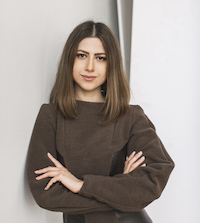
In her thesis collection, The Color is Black, Iranian-born photographer Anahid Ghorbani evoked themes of oppression by literally cloaking her subjects in black. Soon after graduating, she received the 2017 Diane Dammeyer Fellowship in Photography Arts and Social Issues. The year-long fellowship supports an artist to produce a body of work highlighting human rights and social issues with a $25,000 stipend and a culminating public exhibition.
The Color is Black focused on the oppression of women in contemporary cultures and their complicated struggles for power and identity. Ghorbani’s Dammeyer project, The Edge of Shadows, features narratives of immigrants and refugees from various cultures and collaborations with members of Chicago’s Heartland Alliance, one of the world’s leading anti-poverty organizations.
See more of her work at anahidghorbani.com
DEMO: Natalie, could you discuss your recent exhibition in Seattle, Apocalypstick?
KRICK: Apocalypstick is made up of photographs from two different bodies of work: a project I’m still working on called How She Got Her Body Back, intertwined with images from Natural Deceptions. Overall, this show examines the clichés of feminine beauty. I’ve been thinking more about the inherent trickery of photography and how the body is coded as female—styled, posed, photographed, and retouched to appear beautiful and sexual. I’ve been thinking about how I can blur the boundaries between in-camera manipulation and digital collage, and redirect the gaze to the artifice of the image.
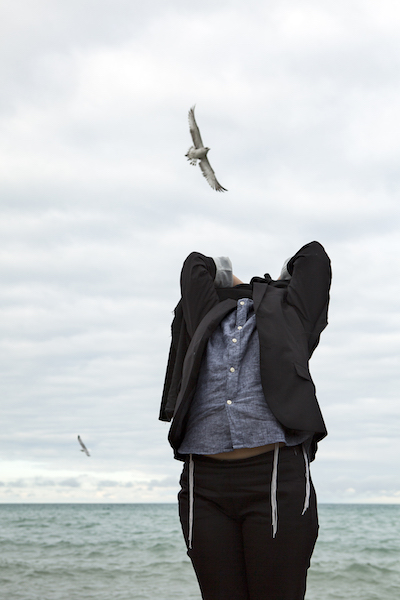
Anahid Ghorbani, We, 2016—“I had a great interest in photography because I believed that what makes a strong photograph are depictions of real life and reality,” says Ghorbani.
DEMO: Jess, could you further discuss To Survive on This Shore?
DUGAN: To Survive on This Shore really does have an educational component and an activist mission. It’s important to me to share the stories of the people I’ve photographed and raise awareness, not just of transgender issues, but of LGBTQ issues more broadly. I’d heard from several younger trans individuals that they had never seen an older transgender person; they had no way to conceptualize what they might look like as they grew older. I really wanted to provide that visual validation for trans folks. One thing that has pleasantly surprised me is the extent to which people who know nothing about the trans community relate to the aging element in the work. This core question of wanting to live and be seen as your authentic self before you die is universally relatable.
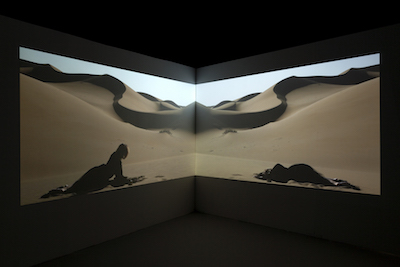 Anahid Ghorbani, The Color is Black, 2 Channel Video, 2017—“I try to see how the individual works can be in dialogue with each other and convey my message stronger,” says Ghorbani. “It’s challenging when you have video, photo, and installation, because the way that you use the space is very important to how your viewers engage with the work.”
Anahid Ghorbani, The Color is Black, 2 Channel Video, 2017—“I try to see how the individual works can be in dialogue with each other and convey my message stronger,” says Ghorbani. “It’s challenging when you have video, photo, and installation, because the way that you use the space is very important to how your viewers engage with the work.”
NATALIE KRICK MFA ’12
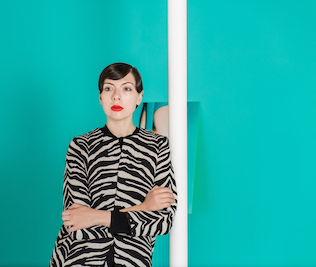
For Natalie Krick, photography is all about performance. The Seattle-based photographer has been recognized in The New Yorker, Slate Magazine, Huffington Post, and New York Magazine’s The Cut for her provocative images of herself, her mother, and sister. In Krick’s collection Natural Deceptions, the three women pose and perform as each other, for each other, and most importantly, for the camera—mocking over-glamorized and hyper-sexualized depictions of women in contemporary and pop culture.
“For a long time, I was only making portraits and then I started to expand,” says Krick, whose work fuses flash photography, bright colors, collage, and digital manipulation. She received the 2017 Aperture Portfolio Prize for Natural Deceptions and its exploration of womanhood and sexuality in the 21st century.
See more of her work at nataliekrick.com
GHORBANI: I wanted to ask about using your own identity in your work (i.e. self-portraits). Do you consider that visibility a privilege?
DUGAN: I’ve never explicitly thought about it being a privilege to expose my identity. I thought about it more as wanting to expose the truth of my identity because it is a less-privileged identity in the United States, and asserting that visibility is really important. I have full control over my work and what I share, and I think that’s an important part of it. I’m definitely choosing which pieces to make public. While making To Survive on This Shore, I encountered a lot of complicated webs around privilege and identity. I had to think about how important it was that people be willing to be public and ultimately decided it was essential. There are various reasons why people don’t have that security or safety, so I try to be mindful of that. But visibility has always been a significant element of my work, whether it’s me or it’s someone I’m photographing.
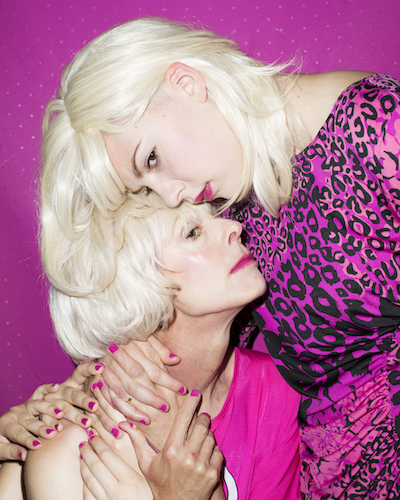 Natalie Krick, “Hilary and Mom and our hands,” Natural Deceptions, 2014—Natural Deceptions features Krick’s mother, her sister Hilary, and herself as subjects of many portraits. “The first time I photographed her,” Krick says about her mother, “I knew there was something magnetic in those pictures, so we kept at it.”
Natalie Krick, “Hilary and Mom and our hands,” Natural Deceptions, 2014—Natural Deceptions features Krick’s mother, her sister Hilary, and herself as subjects of many portraits. “The first time I photographed her,” Krick says about her mother, “I knew there was something magnetic in those pictures, so we kept at it.”DEMO: Do you consider your work feminist? Why or why not?
DUGAN: I very much view myself as a feminist, and I would never make work that’s not feminist. But that doesn’t feel like the primary driving force behind my work. I’m interested in redefining and photographing a more complex version of masculinity, although I’m often interested in masculinity in female-bodied people, so in that way the work would be feminist. I guess I would say yes, I do consider my work to be feminist, but it’s not something I intentionally foreground.
GHORBANI: With my work, I’m hoping to open discussion about the oppression of women around the globe and shed light on the struggle for women’s equality everywhere. But I prefer not to label myself as a feminist because the core philosophy of my work is improving people’s lives and being committed to human rights. For my fellowship, I wanted to focus on women immigrants and refugees, but in the end I didn’t want to talk about only women’s issues, but both men and women’s. What is important to me is crossing all of the divides.
KRICK: I definitely think my work is feminist. I identify as a feminist. But also, I think that feminism and feminist art is so broad and blurry, right? Maybe we need to ask art institutions if they’re feminist.
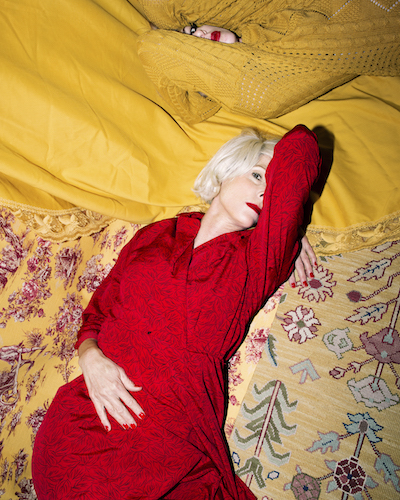
Natalie Krick, “Me posing as Mom posing as Marilyn,” Natural Deceptions, 2014—“Every image I make is referencing something else: a sunscreen ad from the ’70s, an image from a Kardashian Instagram, a beauty advertisement, a picture of my grandmother, a Playboy centerfold of Marilyn Monroe,” says Krick.
